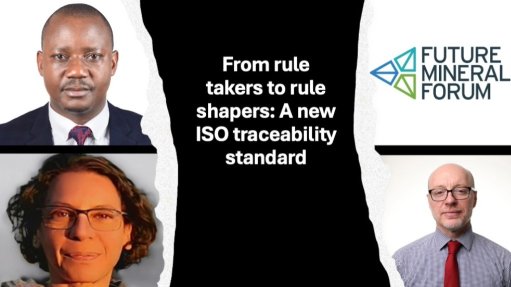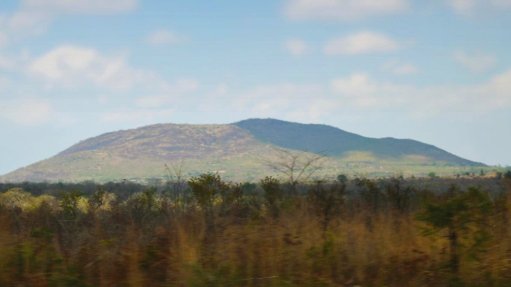Intra-Africa trade lags



PORTIA DUBE Intra-African exports and imports are lagging behind other regions such as Europe, Asia and North America
INVESTING IN AFRICA The Export Credit Insurance Corporation of South Africa invested in the African Export Import Bank to ensure that intra-African trade reaches 22% of the total by 2021
With the 2019 Investing in African Mining Indaba – the world’s largest mining investment conference, dedicated to the capitalisation and development of mining throughout Africa – set to take place in February, insurance corporation Export Credit Insurance Corporation of South Africa (ECIC) business development head Portia Dube says intra-African trade has remained low in comparison to intra-regional trade in other parts of the world.
“Intra-African trade has remained at 15% for the past six years, according to intergovernmental body United Nations Conference on Trade and Development. Intra-African exports and imports are lagging behind other regions such as Europe, Asia and North America.”
Dube stresses that the success of intra-regional trade in these jurisdictions led to internationalisation of production systems. This, in turn, resulted in vertical trading chains, as well as intra-industry trade spanning a number of countries, each specialising in a particular stage of production.
“Global multinational corporations – which we admire in Africa – emerged largely because of the explosive growth of regional value chains and closer economic integration. Outcomes of the growth in regional value chains are increased export revenues, particularly from high-value intermediate products, job creation and higher government receipts from expanded economic activity,” she explains.
She points to studies done by the Ministerial Council of the Organisation for Economic Cooperation and Development, which show that more than 60% of total intra-regional trade in advanced economies is carried out by multinational corporations. This trade significantly increases economic growth, employment and exports.
However, Dube points out that several factors generally constrain intra-regional trade in Africa.
“Most importantly, very few countries are contributing to intra-African trade,” laments Dube. She adds that the top four contributors are South Africa, with 25% at $32-billion; Namibia, with 5.9% at $7.6-billion; Nigeria, with 5.5% at $7.1-billion; and Zambia, with 5.3% at $6.7-billion.
Intra-regional trade on the continent is further constrained by different sets of rules and regulations in each country, resulting in red tape for trade partners. Poor mobility of goods, owing to poor infrastructure, and of people, owing to business visa constraints, also present as a hindrance.
Dube adds that poorly developed financial markets and lack of available finance for African businesses also hinder growth, while a multiplicity of exchange rate arrangements and currencies add to the cost of trade, and limited cross-country banking relationships add to the complexity of payments.
Dube suggests that it will be key for the continent to learn from intra-regional trade models deployed in other regions to propel Africa towards becoming a “prosperous continent based on inclusive growth and sustainable development”, as defined under the African Union Agenda 2063.
Bolstering Intra-African Trade
The African Continental Free Trade Area – a trade agreement between 49 African Union members – is expected to boost intra-African trade once fully ratified and operationalised by all the signatories.
However, Dube suggests that well-functioning trade finance systems are essential and will continue to be fundamental mechanisms for the promotion of intra-regional trade.
“The provision of political and commercial risk insurance supporting South African exporters trading with other African countries, as well as political risk insurance protecting the rights of South African investors operating in other African countries . . . by the ECIC, will prove invaluable to growth,” stresses Dube.
The ECIC invested in trade banking company African Export Import Bank (Afreximbank) in June 2018 to increase intra-African trade from $170-billion in 2014 to more than $250-billion by 2021, to ensure that intra-African total trade reaches 22% in this time.
Dube states that the ECIC’s recent investment, along with the subsequent launch of the joint programme South Africa-Africa Trade and Investment Promotion Programme, has various initiatives aimed at accelerating intra-Africa trade growth.
The two initiatives will provide financing for importing equipment needed by South African export manufacturers, as well as industrial parks and projects in special economic zones, which have the potential to become centres for expanding light manufacturing. They will assist with the issuance of payment assurance and guarantees in support of eligible exports and imports between South Africa and other African countries.
The initiatives will also support South African companies bidding for large contracts in Afreximbank’s member countries by providing bid bonds and advance payment guarantees, as well as guarantees covering African government commitments to project promoters.
The initiatives will also facilitate ease of transportation of South African exports to other African countries through Afreximbank’s Inter-State Transit Guarantee programme, and support efforts to improve the skills of South African exporters in export marketing through capacity-building initiatives.
Dube hopes that the importance of promoting intra-African trade be discussed at this year’s Mining Indaba, where governmental and business representatives from several African countries gather to discuss the state and future of the African mining industry.
Article Enquiry
Email Article
Save Article
Feedback
To advertise email advertising@creamermedia.co.za or click here
Press Office
Announcements
What's On
Subscribe to improve your user experience...
Option 1 (equivalent of R125 a month):
Receive a weekly copy of Creamer Media's Engineering News & Mining Weekly magazine
(print copy for those in South Africa and e-magazine for those outside of South Africa)
Receive daily email newsletters
Access to full search results
Access archive of magazine back copies
Access to Projects in Progress
Access to ONE Research Report of your choice in PDF format
Option 2 (equivalent of R375 a month):
All benefits from Option 1
PLUS
Access to Creamer Media's Research Channel Africa for ALL Research Reports, in PDF format, on various industrial and mining sectors
including Electricity; Water; Energy Transition; Hydrogen; Roads, Rail and Ports; Coal; Gold; Platinum; Battery Metals; etc.
Already a subscriber?
Forgotten your password?
Receive weekly copy of Creamer Media's Engineering News & Mining Weekly magazine (print copy for those in South Africa and e-magazine for those outside of South Africa)
➕
Recieve daily email newsletters
➕
Access to full search results
➕
Access archive of magazine back copies
➕
Access to Projects in Progress
➕
Access to ONE Research Report of your choice in PDF format
RESEARCH CHANNEL AFRICA
R4500 (equivalent of R375 a month)
SUBSCRIBEAll benefits from Option 1
➕
Access to Creamer Media's Research Channel Africa for ALL Research Reports on various industrial and mining sectors, in PDF format, including on:
Electricity
➕
Water
➕
Energy Transition
➕
Hydrogen
➕
Roads, Rail and Ports
➕
Coal
➕
Gold
➕
Platinum
➕
Battery Metals
➕
etc.
Receive all benefits from Option 1 or Option 2 delivered to numerous people at your company
➕
Multiple User names and Passwords for simultaneous log-ins
➕
Intranet integration access to all in your organisation




















